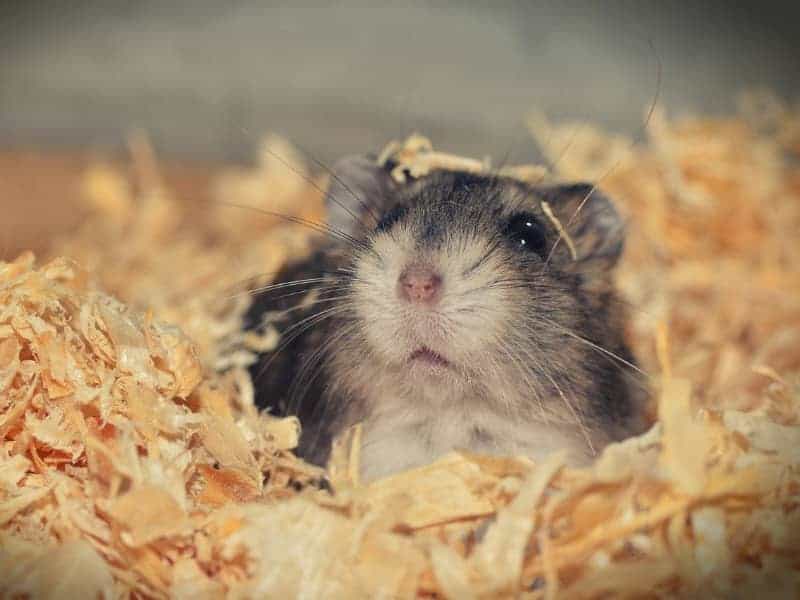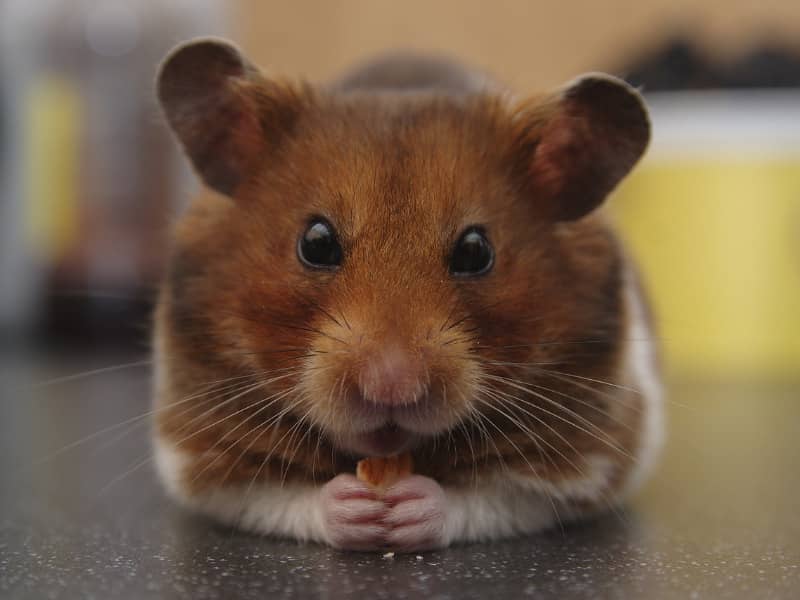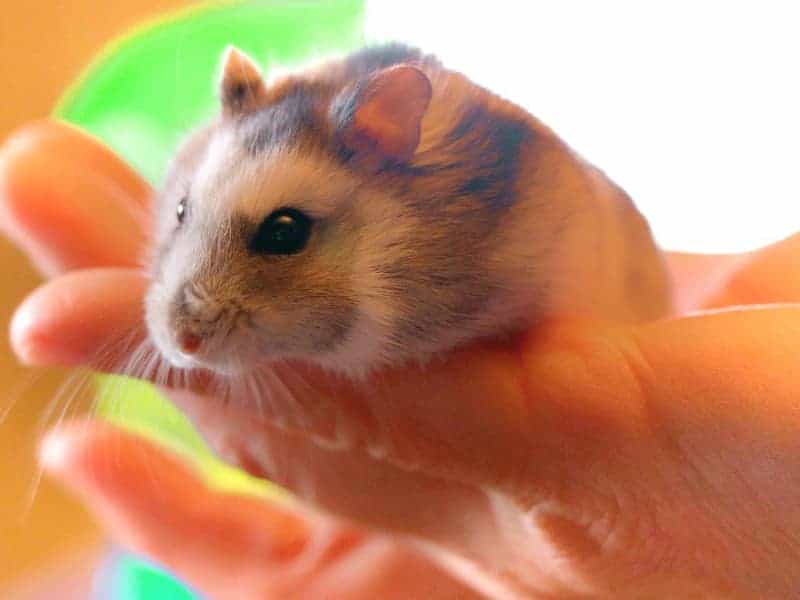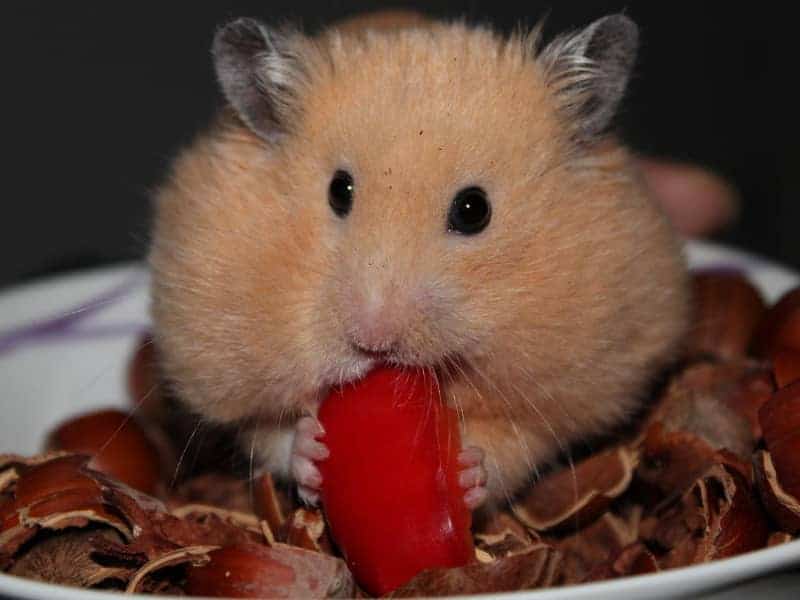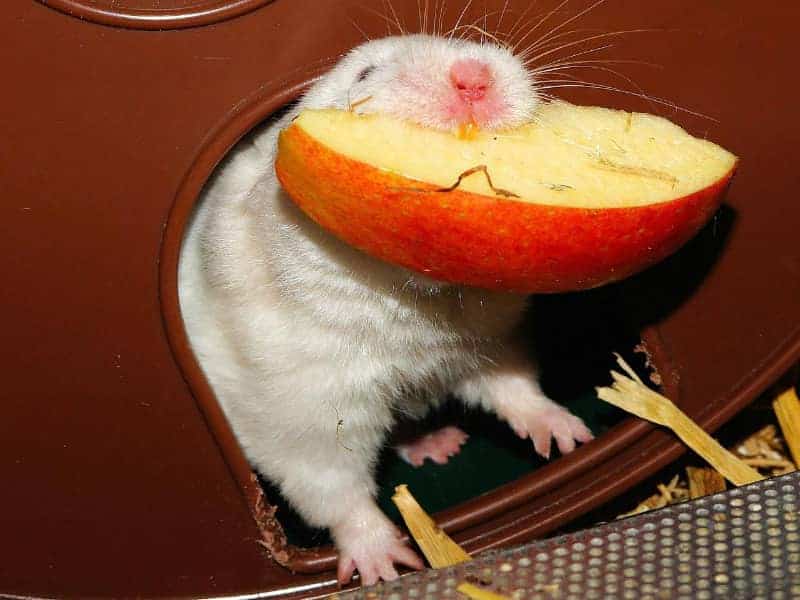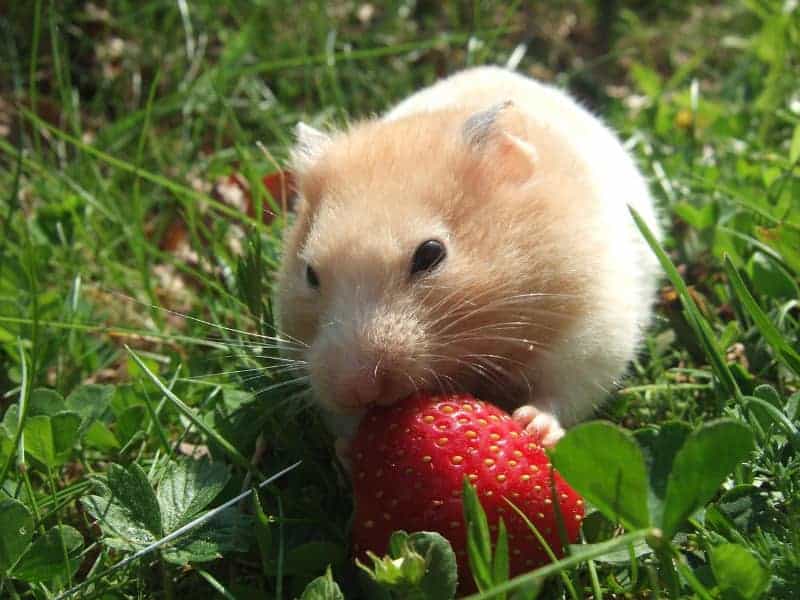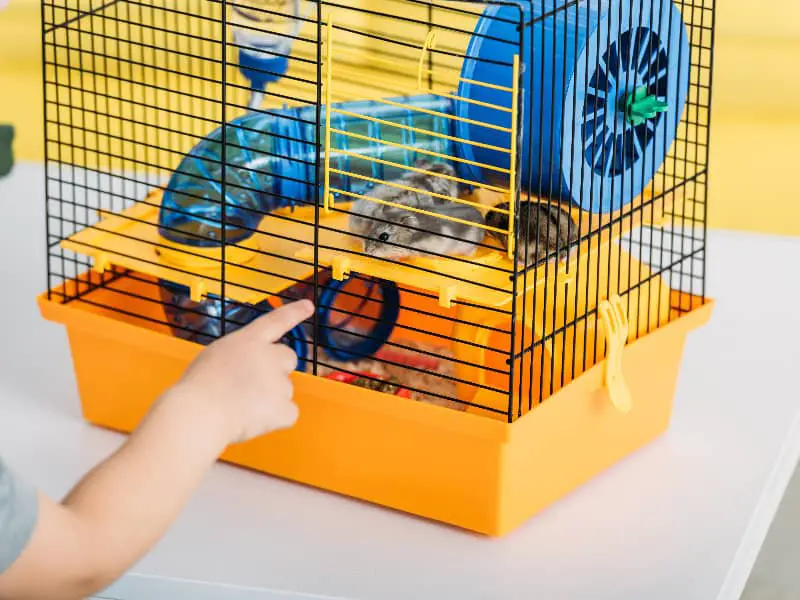
Hamster racetrack
A hamster racetrack is more than just an entertaining toy. It offers numerous benefits that promote both the physical and mental health of your little friend. In this section you will find out why no hamster cage should be without a racetrack.
What is a hamster racetrack?
A hamster racetrack is a specially designed toy that is integrated into a hamster's cage or enclosure. It serves as a running surface on which the hamster can run, test its dexterity and dissipate its energy. It is basically a flat or slightly curved track that can be made of various materials such as plastic, wood or even metal.
The running track is designed to encourage the hamster's natural urge to move. In the wild, hamsters cover long distances in search of food or to explore their territory. The racetrack provides an opportunity to imitate this natural behavior in a controlled environment.
In addition to the simple running surface, there are also more complex models that are equipped with curves, inclines and even small obstacles. These advanced features can increase the mental and physical stimulation for the hamster. They provide a challenge and make the track an exciting addition to the cage.
It is important to take your hamster's needs and preferences into account when choosing a racetrack. Not every hamster has the same requirements or preferences and the track should be chosen accordingly. Some hamsters like to run fast, while others prefer to run at a more leisurely pace or even climb.
The hamster racetrack is therefore more than just a simple toy. It is a useful addition to your hamster's living space, helping it to act out its natural instincts and behaviors. It encourages physical activity, provides mental stimulation and helps your hamster to lead a balanced and healthy life.
Significance for health
Hamsters are naturally very active animals that cover long distances in the wild. In captivity, they often lack the necessary space for sufficient exercise. A running track can help here. It allows the hamster to exercise its muscles and burn calories. This is particularly important to prevent obesity and associated health problems such as diabetes.
The racetrack not only promotes physical activity, but also blood circulation and metabolism. A hamster with good blood circulation is generally healthier and more lively. Regular exercise on the racetrack can also help your hamster to develop a balanced day-night rhythm. This is particularly important as hamsters are nocturnal animals and their activity phases often do not coincide with the human circadian rhythm.
Psychological advantages of a hamster racetrack
Hamsters are curious and intelligent animals that want to be challenged mentally. A racetrack offers the perfect opportunity for this. It allows the hamster to explore its environment in a new and exciting way. This promotes mental stimulation and can help your hamster to feel more comfortable and balanced overall.
Boredom can lead to stress and undesirable behavior such as gnawing in hamsters. A racetrack can serve as a welcome change. It offers the hamster an opportunity to use its energy wisely and keep itself occupied. This can not only reduce stress, but also increase your hamster's general well-being.
Energy reduction
Hamsters have a high energy level and are constantly looking for ways to get rid of this energy. A running track offers the ideal opportunity for this. It allows the hamster to get plenty of exercise and release its energy in a controlled and safe environment.
A hamster that can burn off its energy effectively will be less prone to stress and behavioral problems. In addition, the opportunity to exercise freely on the track can help your hamster to sleep better and feel more balanced overall. A rested and contented hamster is a happy hamster, and that is ultimately the goal of any responsible hamster owner.
Choosing the right hamster racetrack
Choosing the right raceway for your hamster is a crucial step. There are several aspects you should consider to ensure the track is both safe and effective.
Materials and safety
The choice of material is an important factor when it comes to the safety of your hamster. Plastic is easy to clean, but make sure it is non-toxic plastic. Wood is another option, but it can be more difficult to clean and is susceptible to moisture.
Avoid racetracks with sharp edges or small parts that your hamster could swallow. Also make sure that the racetrack is stable and cannot tip over when your hamster runs on it. A secure footing is crucial to avoid injuries.
Size and shape of a hamster racetrack
The size of the racetrack should be adapted to the size of your hamster. A track that is too small may not give the hamster enough room to move freely, while a track that is too large can be overwhelming. The shape of the track can also vary. There are round, oval and even S-shaped models. Consider which design best suits your hamster's needs.
Additional functions
Some racetracks offer additional functions such as built-in toys or treat dispensers. These can make the racetrack even more attractive for your hamster. However, you should make sure that these extras are safe and do not pose a danger to your hamster. Check regularly that all parts are secure and that no small pieces can break off that your hamster could swallow.
Choosing the right raceway is crucial for your hamster's well-being. Consider material, size and additional features to find a safe and effective solution.
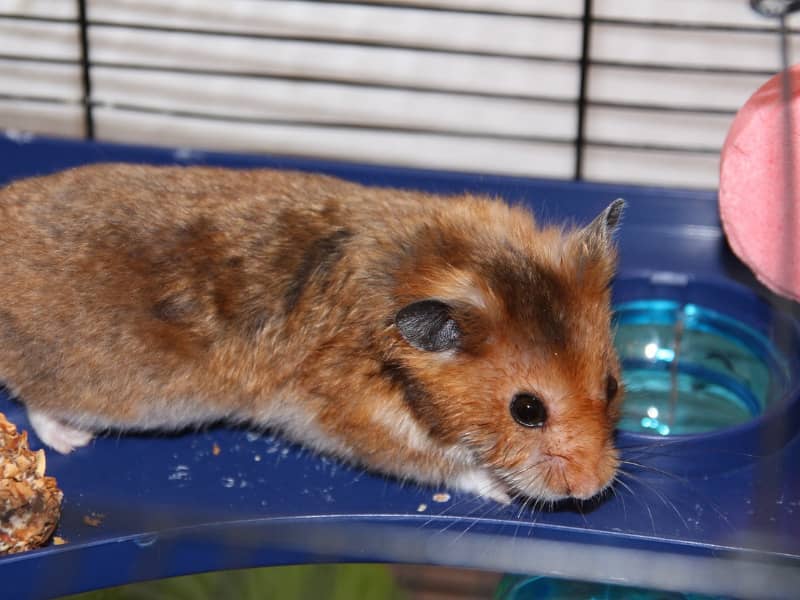
Integration into the hamster cage
Integrating the racetrack into the hamster cage is another important step. There are a few aspects that you should consider to ensure that the racetrack is used optimally and that your hamster enjoys it.
Hamster racetrack - space requirement
Before you integrate the racetrack into the cage, you should carefully consider the space required. In addition to the racetrack, hamsters also need space for other activities such as eating, sleeping and hiding. Make sure that the racetrack does not take up all the available space in the cage.
An overcrowded cage can cause stress for your hamster. Therefore, it is important to find a balance between the size of the raceway and the remaining space in the cage. Measure the cage and the racetrack before you buy to make sure they fit together well.
Positioning
The position of the raceway in the cage is also crucial. It should be placed in a place that is easily accessible for the hamster, but does not block the path to food, water or sleeping areas.
The racetrack should also not be placed directly next to a heat source or in a draughty area. Make sure that the position of the racetrack supports your hamster's natural behavior and movement patterns. This will make it a useful addition to your little friend's living space.
Combination with other toys
The racetrack should not be the only toy in the cage. Other toys such as tunnels, climbing frames or wheels can increase your hamster's activity options.
However, make sure that the different toys harmonize well with each other and do not overload the cage. Each toy should have its own "area" so that your hamster can fully enjoy the variety of activities.
The correct integration of the racetrack into the cage is crucial for the well-being and satisfaction of your hamster. With the right planning and arrangement, the racetrack becomes a valuable addition to the cage and offers your hamster another opportunity to let off steam.
Hamster racetrack - tips for use
Once you have chosen the perfect racetrack and integrated it into the cage, there are a few tips that can help you get the most out of this new toy.
Introduction of the hamster
Introducing your hamster to the new runway should be done carefully. Don't just put him in and expect him to start immediately. Give him time to explore the track. You can pique his curiosity by placing a few of his favorite treats nearby.
It is important not to rush the hamster. Some hamsters are naturally more curious and will take to the track more quickly, while others may need a little more time. Be patient and give your hamster the freedom to discover the track at its own pace.
Cleaning and maintenance
Hygiene is crucial when it comes to your hamster's health. The running track should be cleaned regularly to prevent the build-up of bacteria. Depending on the material, this can be done with a damp cloth, soapy water or special cleaning agents.
In addition to cleaning, maintenance is also important. Check the racetrack regularly for signs of wear or damage. A crack in the material or a loose screw can be a source of danger for your hamster.
Avoid common mistakes
There are some common mistakes that hamster owners make when using a running track. One of them is letting the hamster run in it for too long. Even though hamsters are high-energy animals, they need breaks. Make sure that your hamster does not become overtired.
Another mistake is neglecting cleaning. As already mentioned, hygiene is crucial. A dirty raceway can lead to health problems for your hamster.
With these tips, you can make sure your hamster gets the most out of the track. From introduction to regular maintenance, there are many ways to make the experience as enjoyable as possible for your little friend.
Conclusion: Hamster racetrack
A hamster racetrack is much more than a simple toy. It serves as an important addition to your hamster's living space and offers numerous benefits for their physical and mental health. From choosing the right materials and size to the optimal positioning in the cage, there are many aspects that should be considered.
With the right care and use, the racetrack can become a valuable addition to your hamster's everyday life. It not only encourages exercise and energy release, but also provides opportunities for mental stimulation and a general sense of well-being. By following some basic tips and advice, you can ensure that your hamster enjoys and benefits from the racetrack to the full.
Author

-
Garden animal - A life with nature
Welcome to my animal blog! My name is Dirk and I am happy to take you on my journey through the fascinating world of animals and gardening.
Born 54 years ago, I have had an insatiable curiosity for the animal world around me since childhood. Although I have moved professionally in other industries, my true passion has always been animals and nature. It is remarkable how a small garden has become such an important part of my life.
Many of my fondest memories are associated with the animals that share our home. Whether it's the curious squirrels that scurry across the trees in the morning, the colorful variety of birds that visit our feeders, or the busy bees and butterflies that pollinate our flowers, every moment with them is invaluable to me.
This blog is my contribution to share my experiences, discoveries and insights with like-minded people. Here I will share stories of unforgettable encounters with animals, give tips on gardening and creating wildlife-friendly habitats, and take you on my journeys through nature.
Thank you so much for being here!
Cordial,
Dirk aka garden animal
Last posts
- 27. February 2024PetsVeganes Hundefutter – Grün und Gesund?
- 18. January 2024ChickensOregano für Hühner
- November 27, 2023HamsterDiurnal hamsters
- November 24, 2023HamsterHamster hammock

